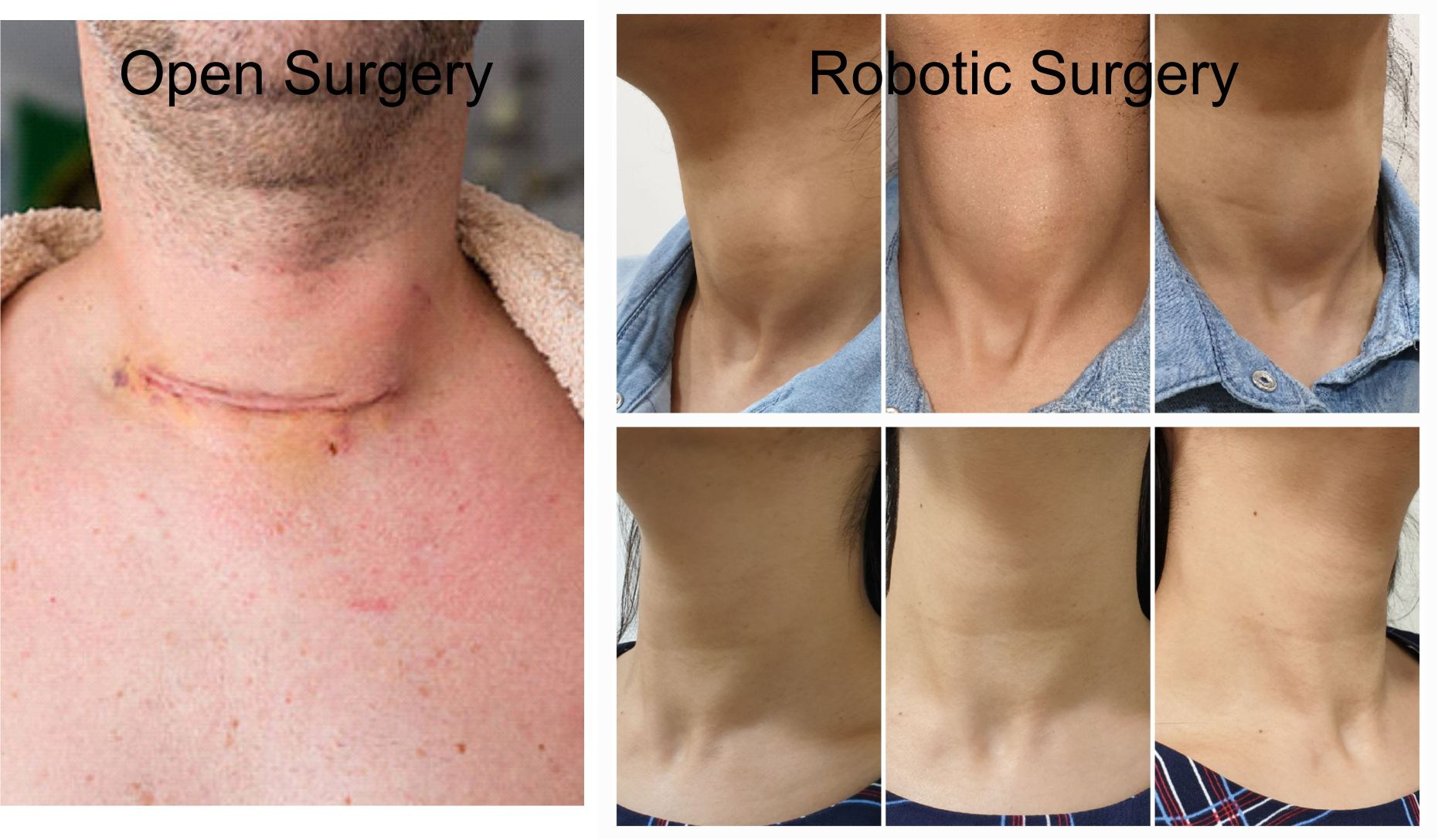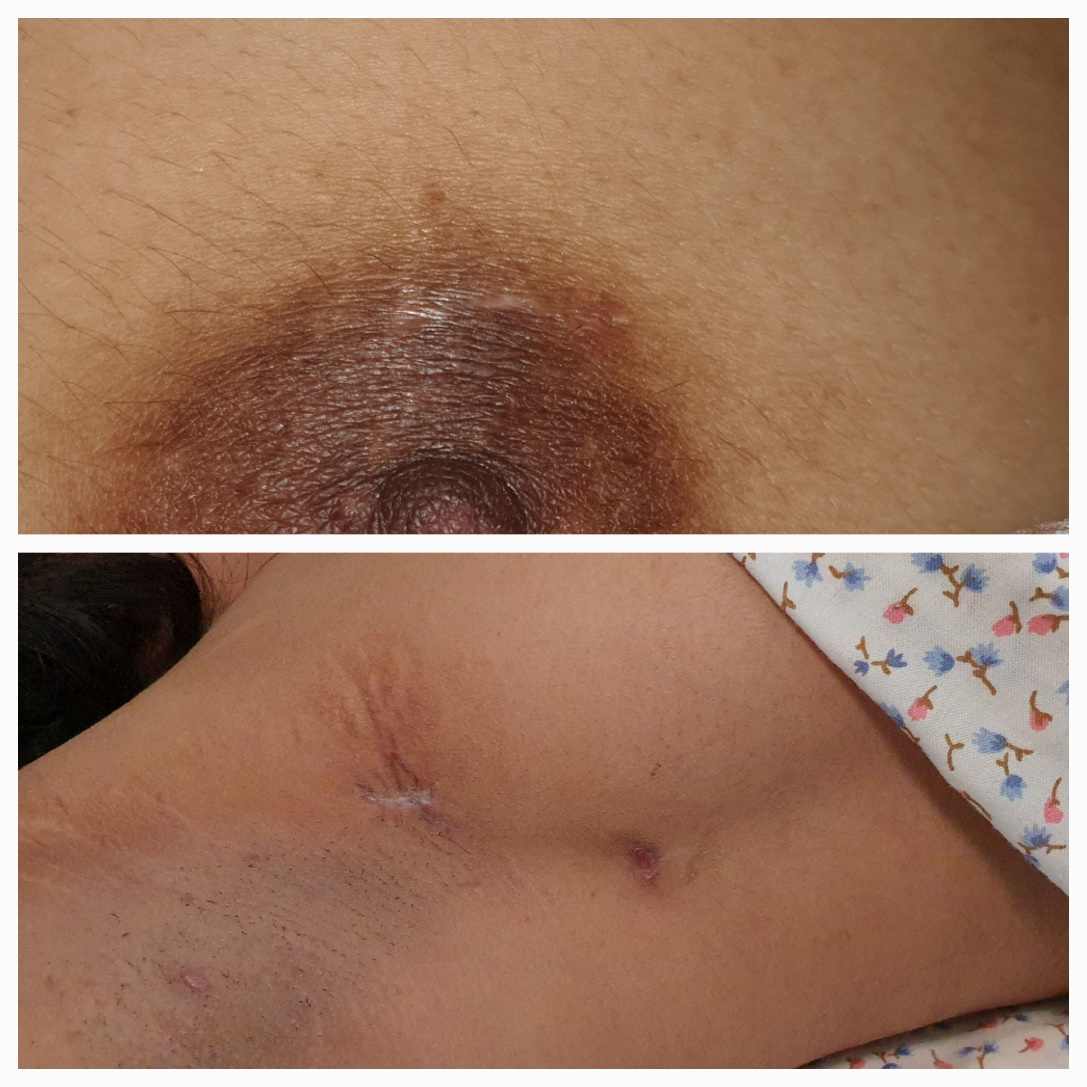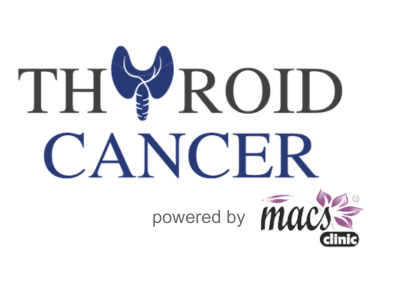Follicular Neoplasm
This page discusses the management of follicular neoplasm. It is reported as Follicular neoplasm when the pathologist is unable to truly characterise a thyroid tumour as non-cancer (benign) or cancer. This page explains the steps of management of follicular neoplasm. This site content is developed with help from MACS Clinic and Dr Sandeep Nayak, one of the world’s most renowned thyroid surgeons operating out of major hospitals located in Bangalore, India. Dr Nayak is known for the development of RABIT technique of robotic thyroidectomy. This site is constantly updated with new information.
Follicular neoplasm is a confusing term for patients. In fact you are not alone. When pathologists cannot clearly categorize a thyroid tumor as either benign or cancerous, they term it as follicular neoplasm. However, what one needs to know is that there is 20% risk of it being thyroid cancer when the report says follicular neoplasm. That is why it needs treatment.
Generally, thyroid cancers are highly curable, especially follicular and papillary types. The cure rate is above 97% in younger patients if detected early and treated appropriately.
Currently, robotic thyroidectomy using the RABIT technique has emerged as a standard for treating follicular neoplasm thyroid cancer. It is a scarless robotic surgery developed by the highly qualified and experienced thyroid surgeon and surgical oncologist in India, Dr. Sandeep Nayak.

Dr. Nayak is the founder and chief oncologist of MACS Clinic, a dedicated centre for advanced oncology treatment in Bangalore. He is a pioneer of several novel surgical techniques that offer amazing benefits to patients.
This page provides information about the management and treatment of follicular neoplasm thyroid cancer.
Have a Question?
What is follicular neoplasm?
The thyroid is a butterfly-shaped small gland in the front of the neck below the voice box. It produces hormones that regulate metabolism, heart rate, mental function, and body temperature.
As mentioned earlier, follicular neoplasm of thyroid is a term pathologists use to describe a thyroid tumor that is diagnosed through fine-needle aspiration cytology (FNAC).
However, this diagnosis is complex as it includes both benign and malignant conditions, including:
Adenomatoid nodule – It is a benign growth in the thyroid gland often associated with nodular thyroid hyperplasia.
Follicular adenoma – It is a benign thyroid tumor where the normal thyroid gland is separated from the tumor cells by a capsule, a thin tissue barrier.
Follicular carcinoma –The tumor cells of this thyroid cancer resemble that of follicular adenoma. However, the cells of follicular carcinoma cross the barrier capsule and spread into the thyroid glands or outside.
Non-invasive follicular thyroid neoplasm with papillary-like nuclear features (NIFTP) – It is a benign thyroid tumor with cells separated from the normal gland by a barrier tissue called the capsule.
Non-invasive follicular thyroid neoplasm with papillary-like nuclear features (NIFTP) – It is a benign thyroid tumor with cells separated from the normal gland by a barrier tissue called the capsule.
Follicular variant of papillary thyroid carcinoma – This is a thyroid cancer with cells resembling those in NIFTP. The major difference between the two is that the cells of this cancer cross the capsule and invade the surrounding thyroid tissue.
It is very important to choose the right surgeon for your follicular neoplasm thyroid treatment because, for a positive outcome, the surgery must be as complete as possible. Surgery is the most important treatment for thyroid cancer.
How is follicular neoplasm thyroid cancer diagnosed?
To diagnose follicular neoplasm the doctor usually recommends FNAC. While conducting the follicular neoplasm thyroid cytology, the pathologist uses a thin needle to remove a small tissue sample from the thyroid nodule.
During microscopic examination, the cells of follicular neoplasm exhibit similarities to normal follicular cells but with smaller follicles, termed microfollicles.
If these cells differ in size, color, or shape from normal follicular cells, the pathologist terms them as atypical. These cells develop due to infection, medication, cancer, or radiation.

What is the next step after diagnosis?
The doctors either suggest half or total removal of the thyroid gland with the tumor to most of the patients diagnosed with follicular neoplasm.
There is a 20% chance of it being a malignant neoplasm (medical term for cancer) of thyroid gland which can grow and metastasize. Further treatments depend on the final diagnosis.
The surgical options include conventional open, endoscopic, or robotic thyroidectomy. Dr. Sandeep Nayak, who developed the RABIT technique, is of the opinion that robotic thyroidectomy offers several advantages as opposed to open procedures.

The traditional approach leaves behind noticeable scars that make many patients self-conscious of them. Whereas, in scarless robotic surgery, the thyroid gland is dissected and removed by making small incisions in distant places like the armpit. There is no incision on the neck.
The main objective of the scarless procedure is to provide a successful outcome as the open surgery and also offer cosmetic satisfaction and privacy to the patient. This surgical approach is used to treat various cancerous and benign thyroid neoplasm.
For best results, it is advisable to consult an experienced thyroid surgeon. Furthermore, there are only a few surgeons around the world who are adept in performing scarless robotic thyroid surgery, as it requires advanced training and expertise.
RABIT Procedure
Robotic-assisted breast-axillo insufflation thyroidectomy (RABIT) was invented by Dr. Sandeep Nayak in 2018 for removing the thyroid tumor through small cuts.
In this procedure, the surgeon uses the ultra-modern Da Vinci robotic device and a single docking technique to dissect the lobes and the lymph nodes.
The scars which are only 0.8 to 2 centimeters are well hidden in the armpit. Moreover, this surgical approach gives the surgeon higher precision, magnification, and 3D vision, thereby greatly improving the medical and postoperative results.
The final scars of RABIT are seen in the picture. The image is taken 15 days after surgery.

Further treatment for follicular neoplasm
To figure out the specific condition, it is necessary to remove the entire lobe of thyroid (at least) having follicular neoplasm and examine it under the microscope.
The pathologists will check whether the tumor is enclosed in the capsule or has it invaded the thyroid gland by crossing over the capsule. This examination is only possible after removing the entire tumor.
The surgeon removes the tumor by either performing hemithyroidectomy or total thyroidectomy. If the tumor turns out to be a malignant neoplasm of thyroid gland, then the patient will have to undergo total thyroidectomy if the initial surgery was hemithyroidectomy unless the cancer falls under low risk category.
How to Reach Us?
Each year, our center welcomes many patients from all corners of the globe. With our extensive experience, we have streamlined the process to make it effortless for you to visit Bangalore for your evaluation, scans, biopsies, and surgery all in one trip. For your convenience, a significant portion of the follow-up can be conducted through online consultations. Additionally, we are committed to assisting you with postoperative treatment in your home country or city, eliminating the need for you to return to Bangalore, India.
Frequently Asked Questions
Can follicular neoplasm metastasize?
No. They don’t. Mestastasis or spread happened only if it is a cancer.
What is the survival rate?
It depends on if it is a cancer or benign. Only 20% of follicular neoplasm are cancers. For them 5-year survival rate for women is around 90% and in men around 85%.
Is follicular neoplasm cancerous or non-cancerous?
It is challenging for pathologists and surgeons to diagnose follicular neoplasm. Surgery is the preferred treatment, which is performed in about 70% of these cases for non-cancerous conditions.
